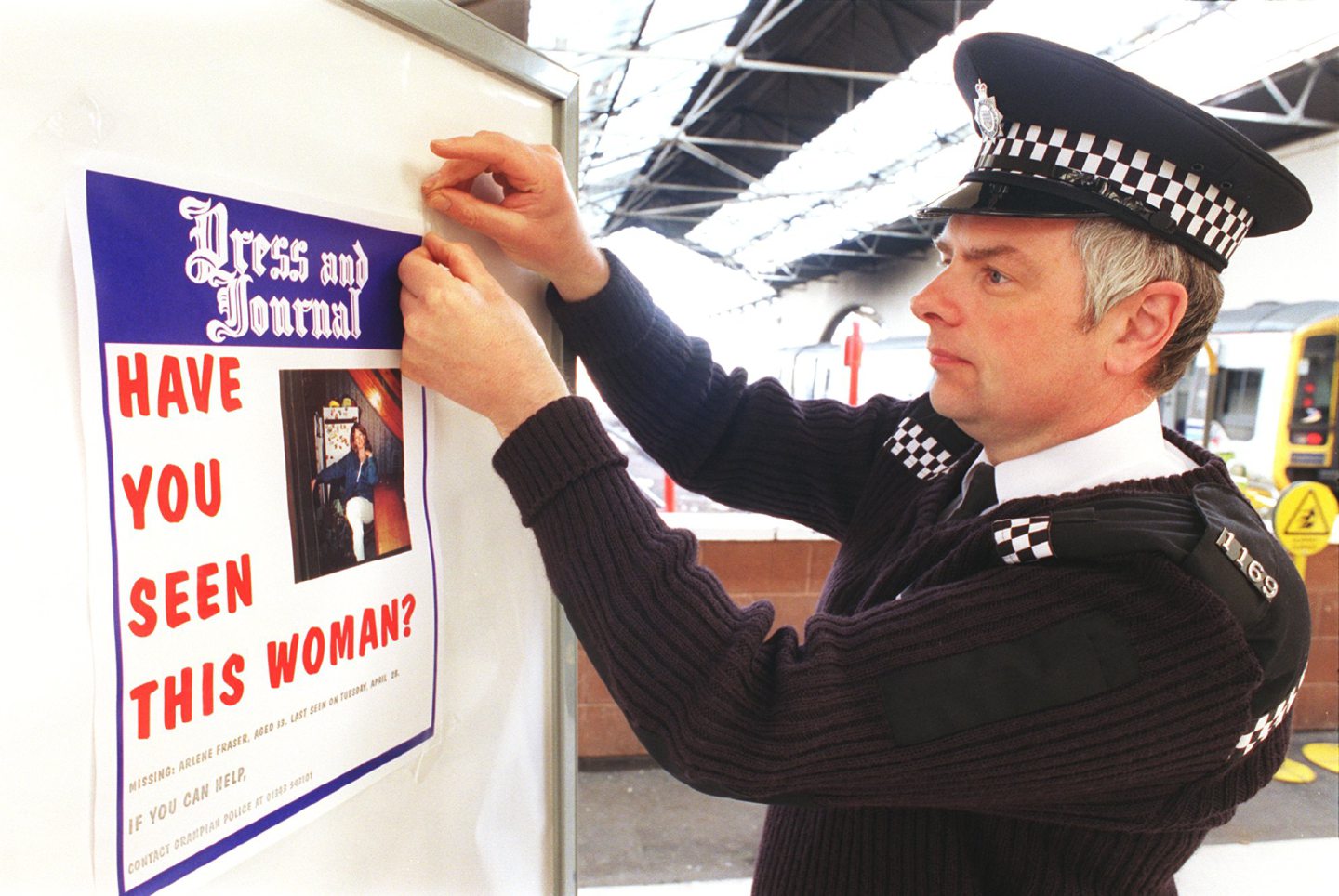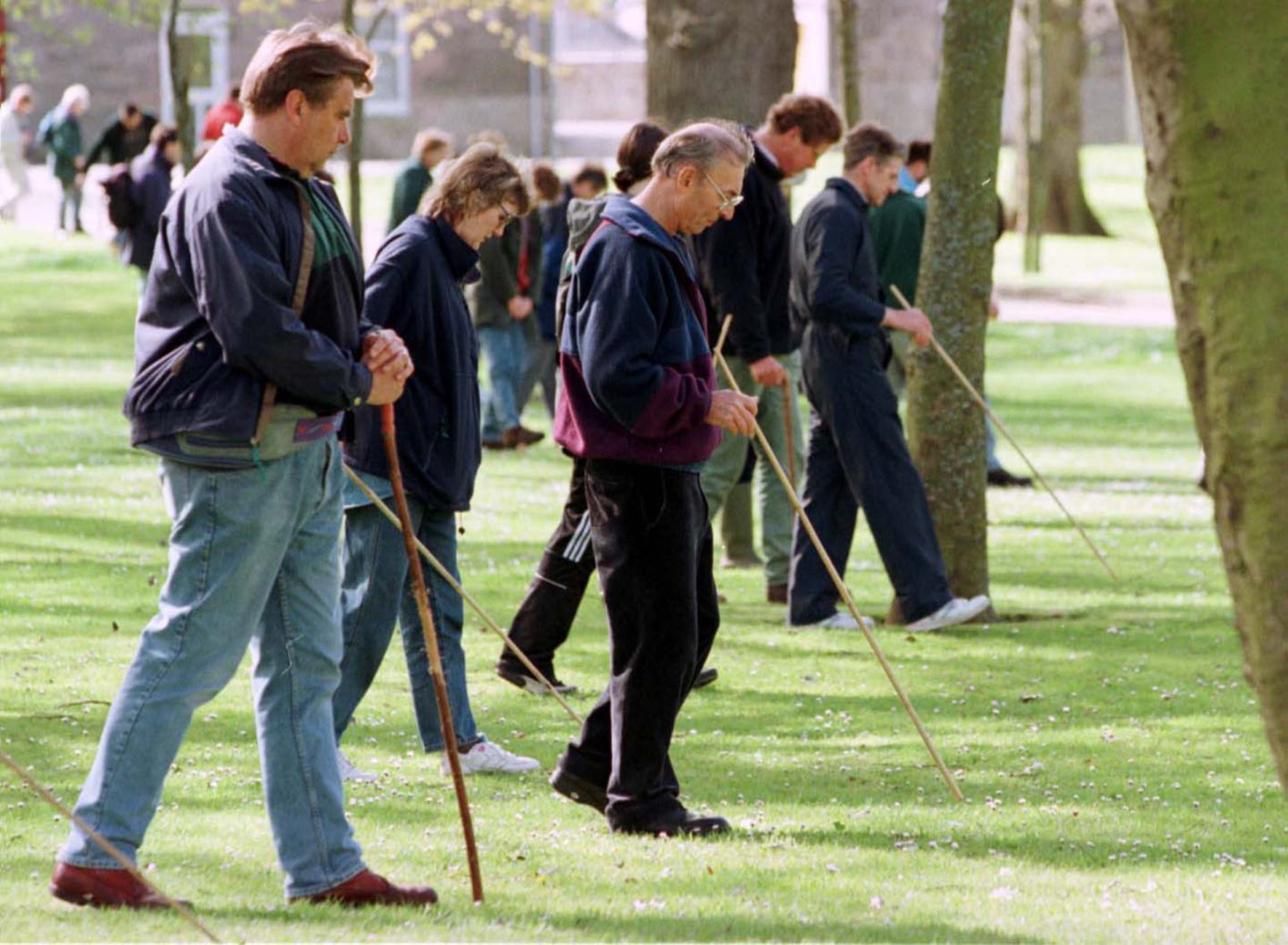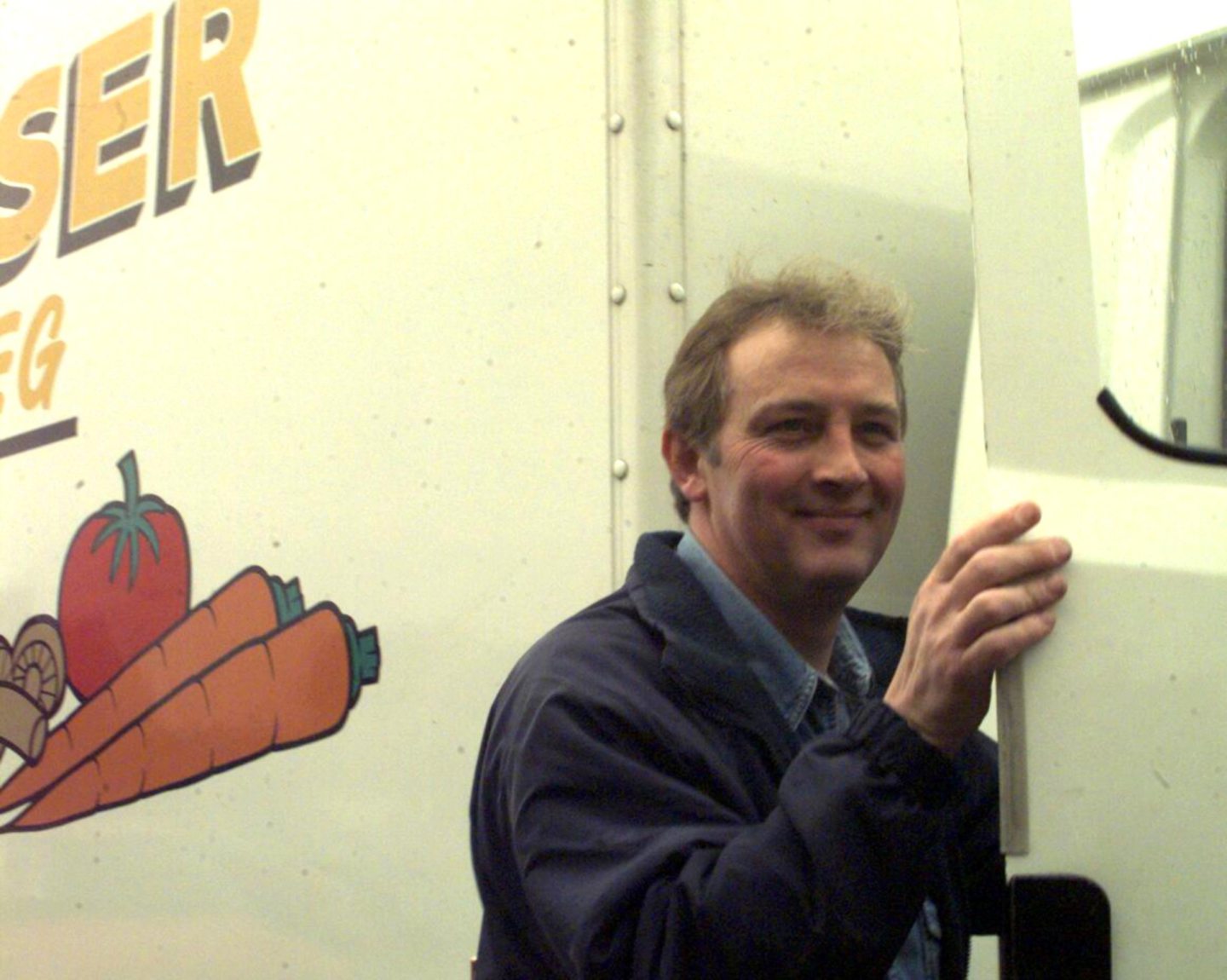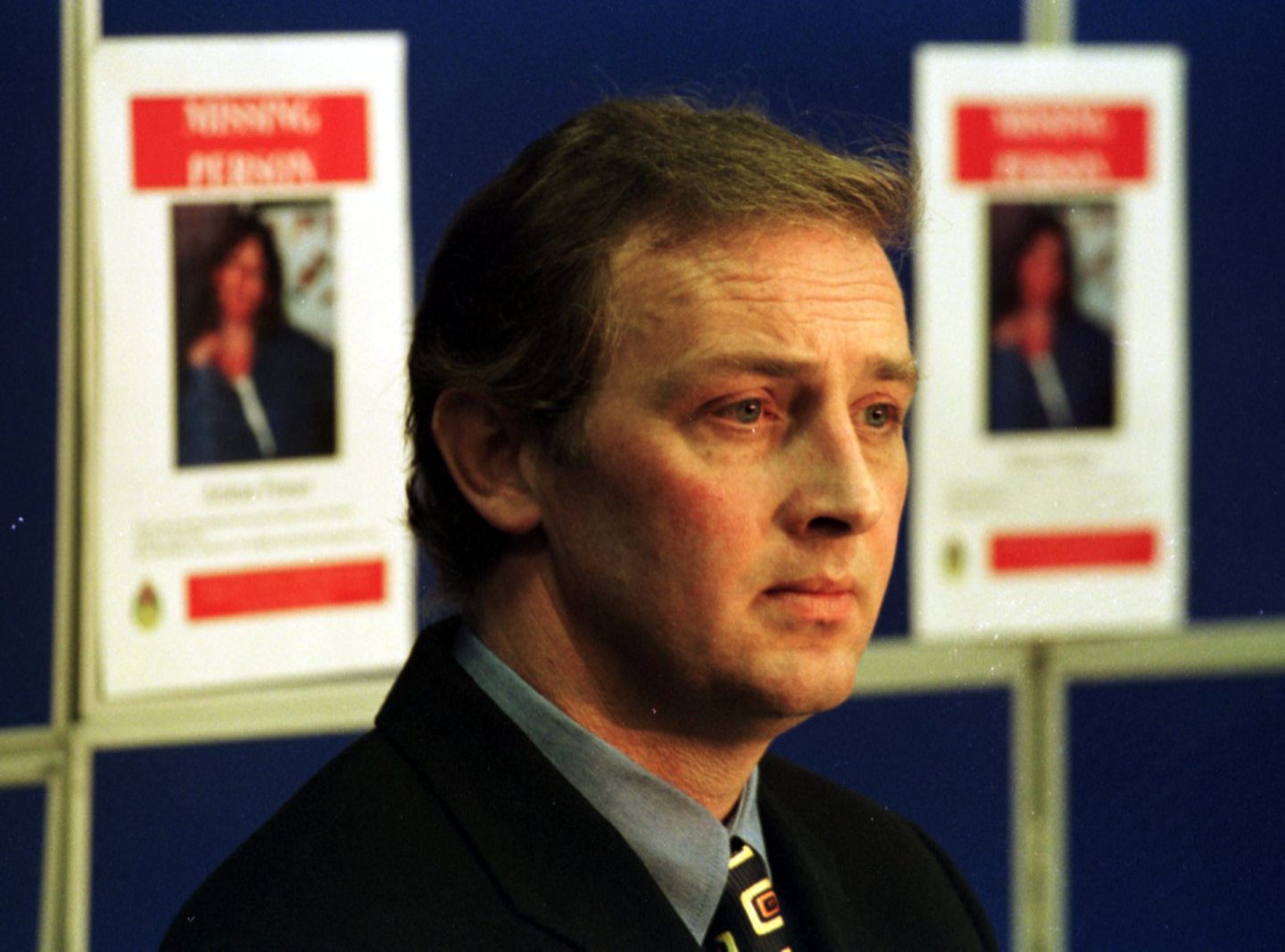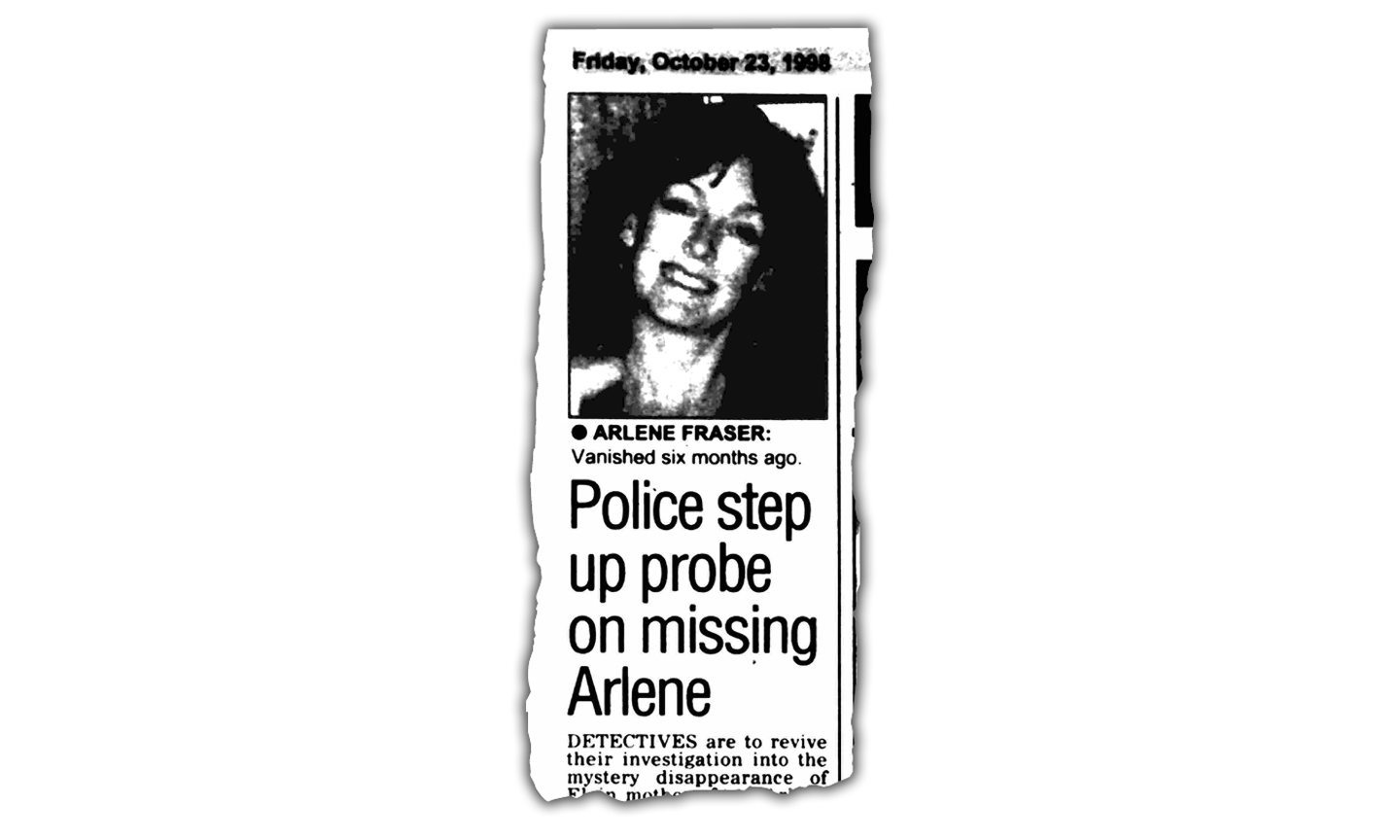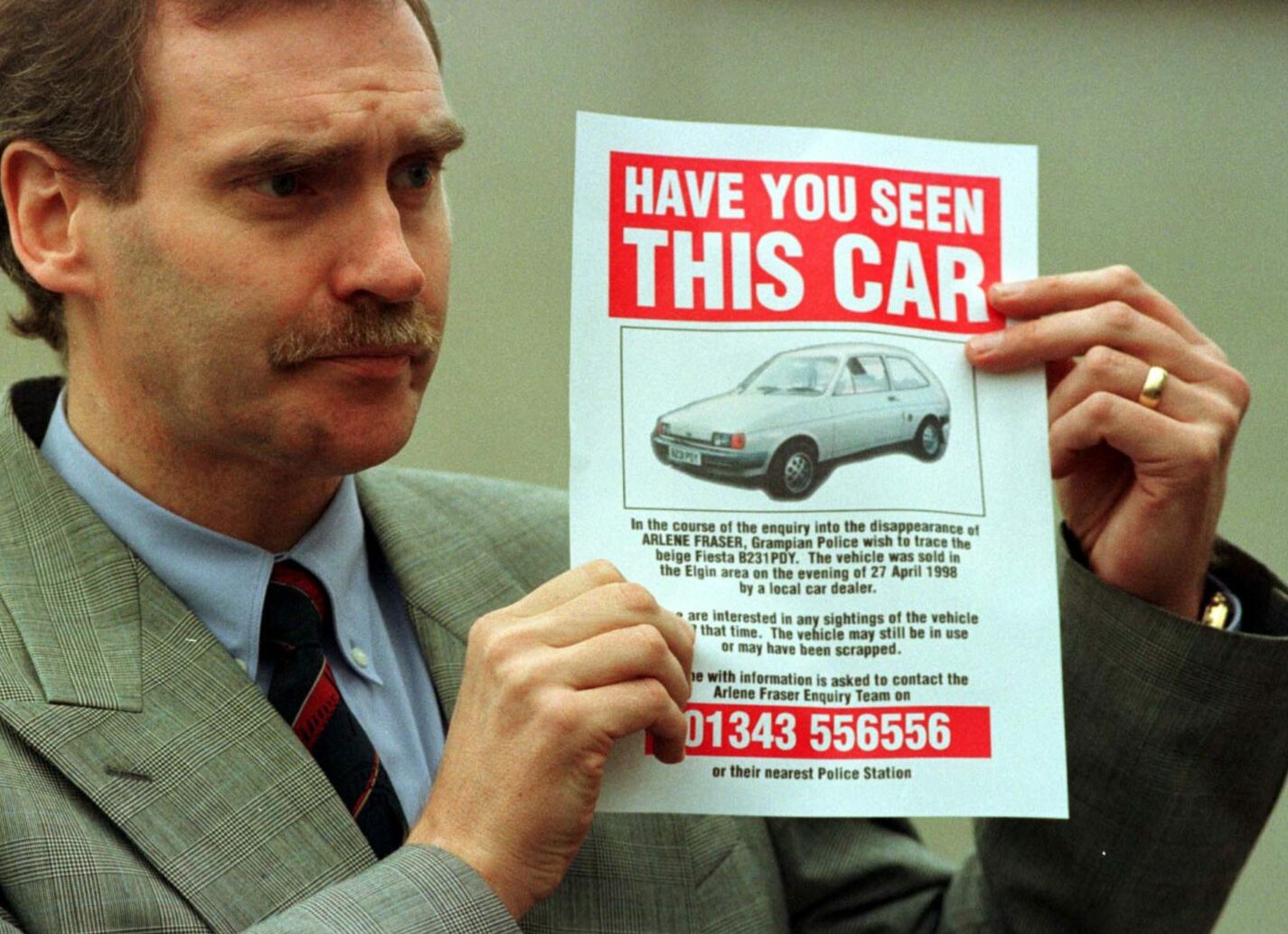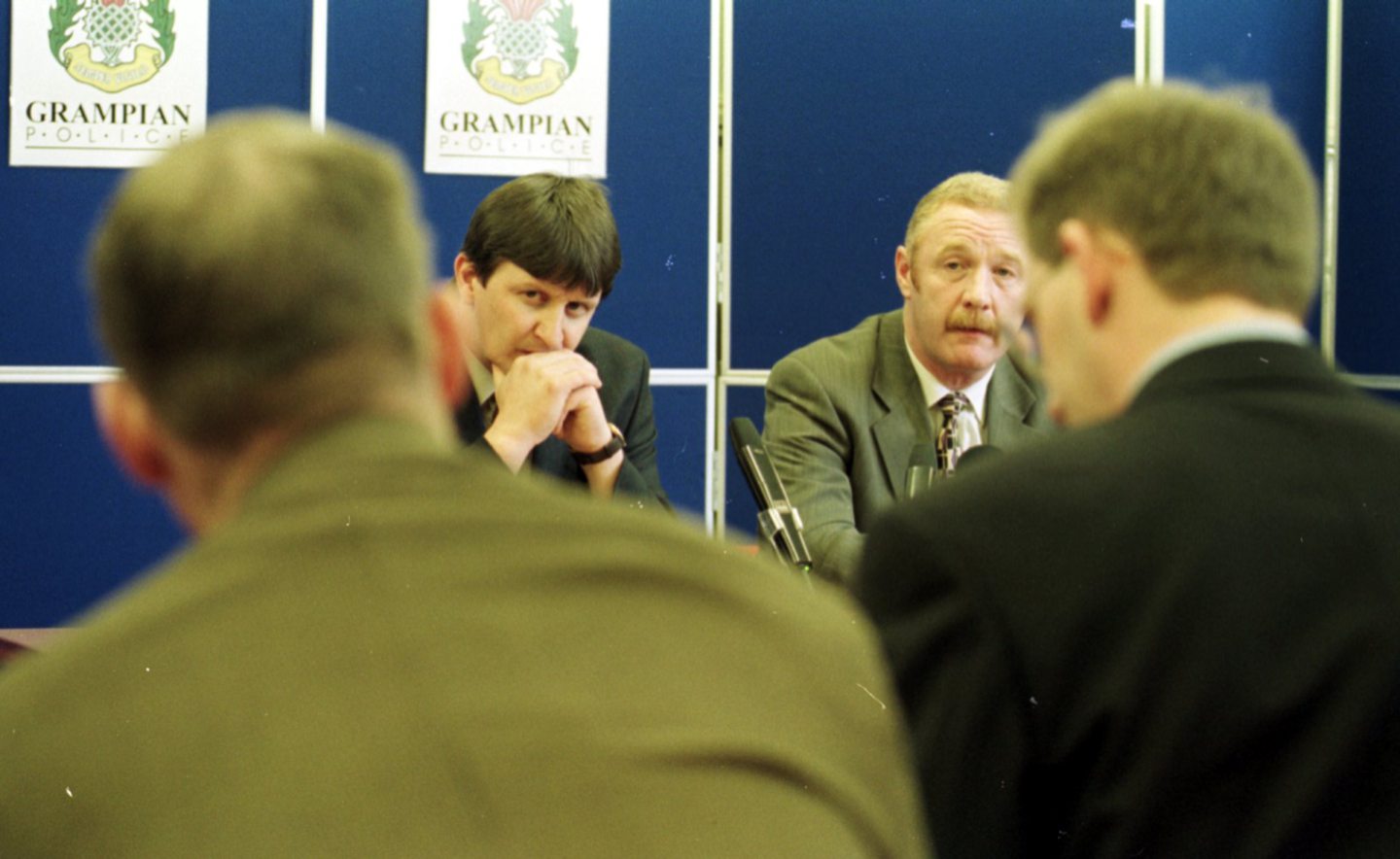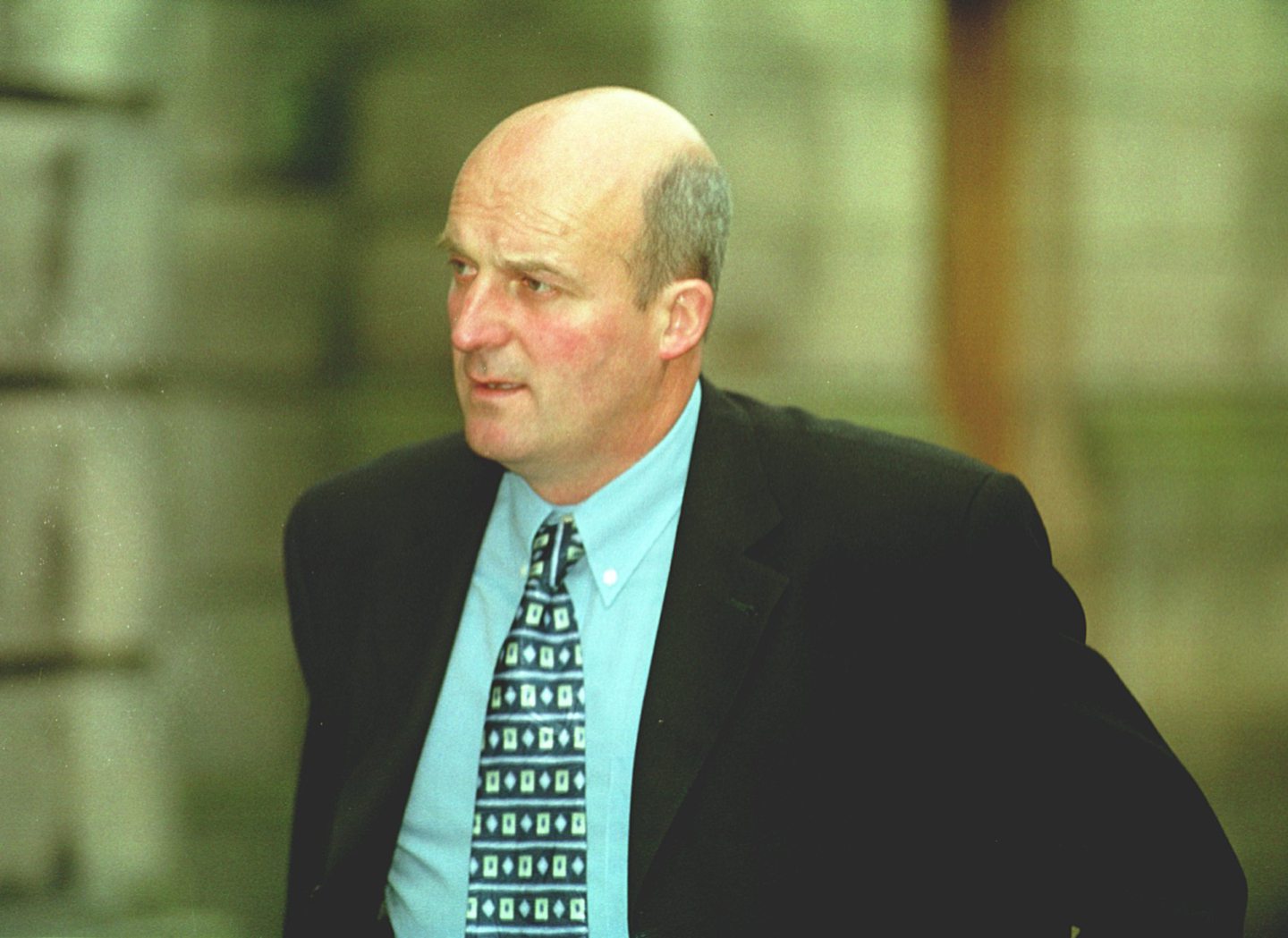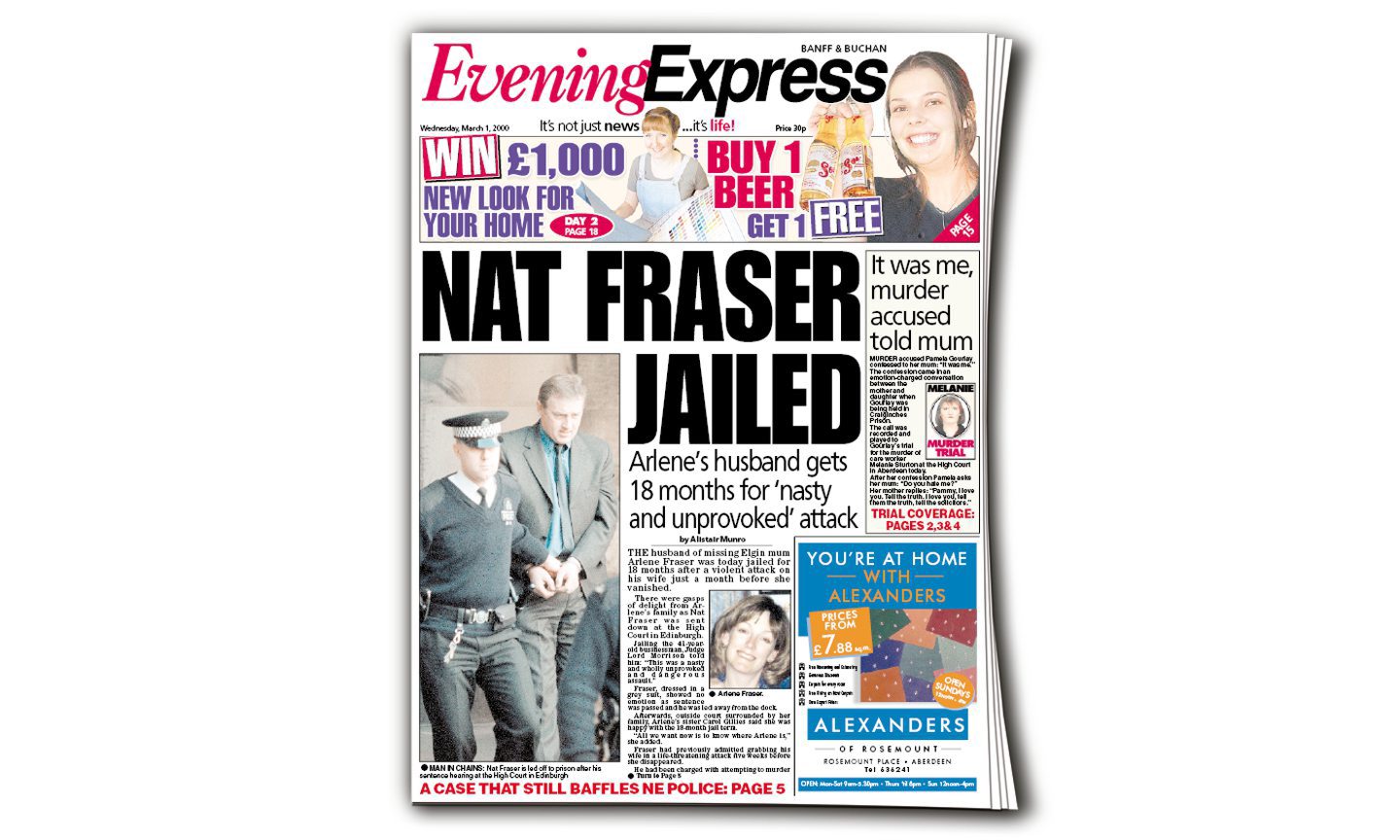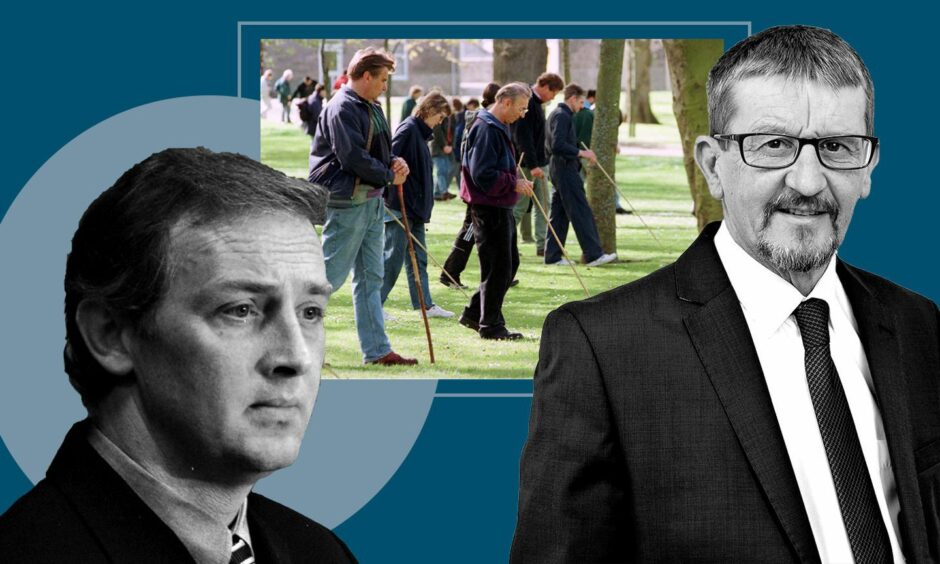
It had been two days since Arlene Fraser vanished – disappearing completely out of the blue.
Grampian Police bosses were hellbent on discovering exactly what happened to the 33-year-old mum of two during a 50-minute window on April 28, 1998.
They put neighbouring forces on high alert, interviewed the key players and ruled out that Arlene’s husband Nat had the opportunity to kill her directly with his own hands.
Next came the media campaign.
Detectives appealed through newspapers, radio stations and TV channels, promoting a phone number to call.
Beat bobbies put up posters, carrying Arlene’s picture, around Elgin.
The community response was huge and police welcomed it – but it did cause problems.
The missing phone call
Well-intentioned people desperate to help, but with little new information, were taking up the time of police who had more concrete leads to follow.
So a solution was found.
A search was organised for the rural areas around Elgin five days after Arlene went missing – to help the community feel useful even if the likelihood of such a search turning up evidence was remote.
Former Detective Superintendent Alan Smith, who was the deputy senior investigation officer on the case, said: “We had no expectation from that search, but there was an overwhelming public plea for help.
“To satisfy that public desire to do something, you create a platform to allow that to happen.
“The search was coordinated by the search teams at the local town hall. And off they went.
“It was an opportunity to get more publicity.”
That publicity campaign itself generated hundreds of calls.
One of those would blow the case wide open – but, due to the sheer number of calls, it was initially overlooked.
Mr Smith said: “That is a regret.
“Was it in our gift? It probably was if I was being highly critical.
“But it was one of many hundreds of vague lines of inquiry.”
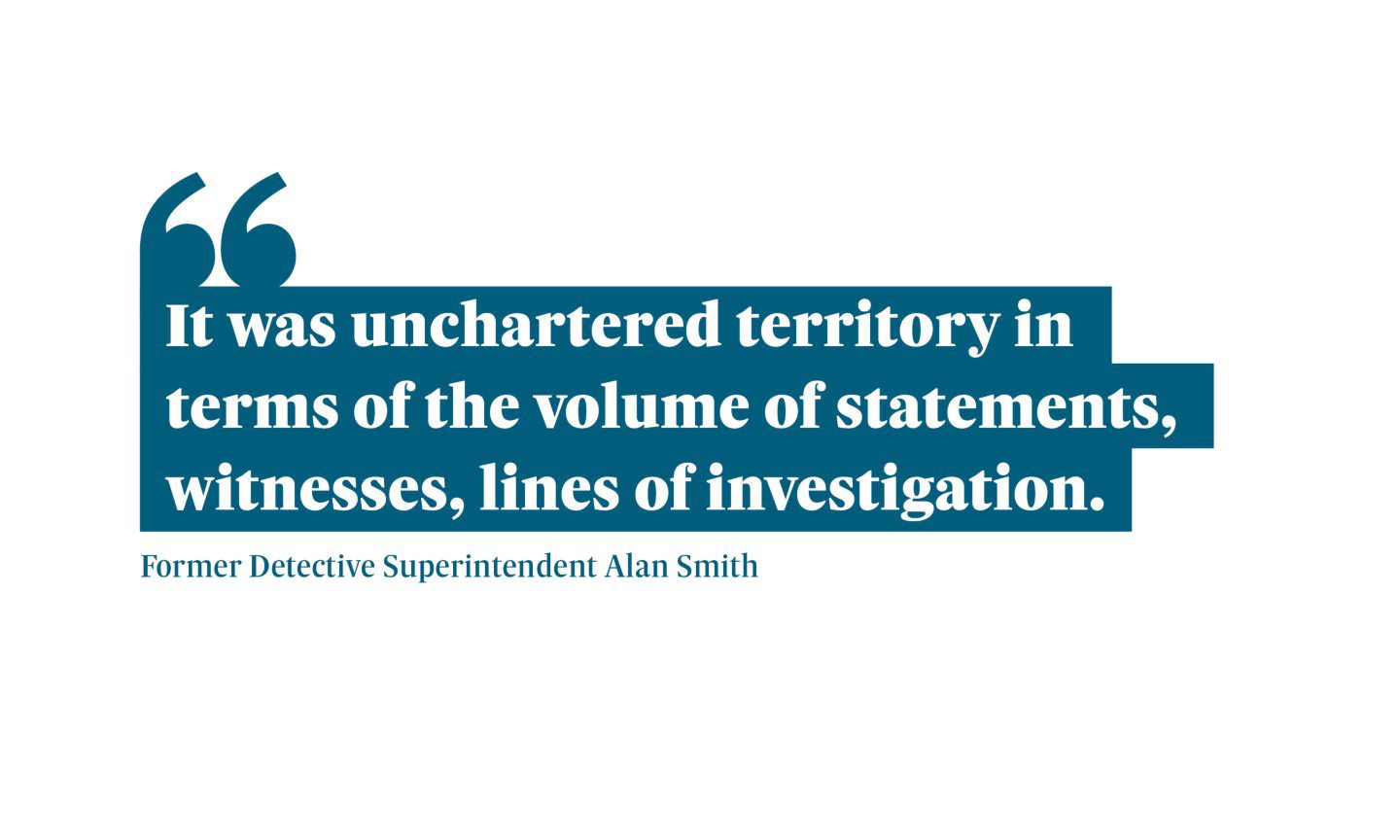
The tip-off, which we shall detail later on, was deeply frustrating for police, who were putting their heart and soul into the probe.
Mr Smith said: “It was unchartered territory in terms of the volume of statements, witnesses, lines of investigation.
“There must have been eight admin staff working full time on it. It was massive.
“Some witnesses were interviewed multiple times.”
He added: “Once you get into these things, you get sucked into and it becomes all-consuming.
“I was managing a team of guys who were highly vested in getting to the bottom of this.”
Elgin: A community split in two
They were also working in a close-knit community, where people took sides based on their experience of Nat.
Some saw him as a cheeky chappy who delivered veg, played in a band and loved his kids, while others saw him as a wife beater.
Mr Smith said: “We had a sizeable team of Aberdeen-based officers in Elgin.
“Maybe there was a bit of resentment, certainly among Nat’s followers.
“I remember being in a supermarket in Elgin off-duty and someone came up to me and said: ‘Can you not just give Nat a break?’.
“It was almost like he was saying ‘f*** off back to Aberdeen’.”
People defending Nat spread false rumours around Elgin that Arlene often got drunk, took drugs and went off with other men – and it was alleged that Nat directly or indirectly started those rumours.
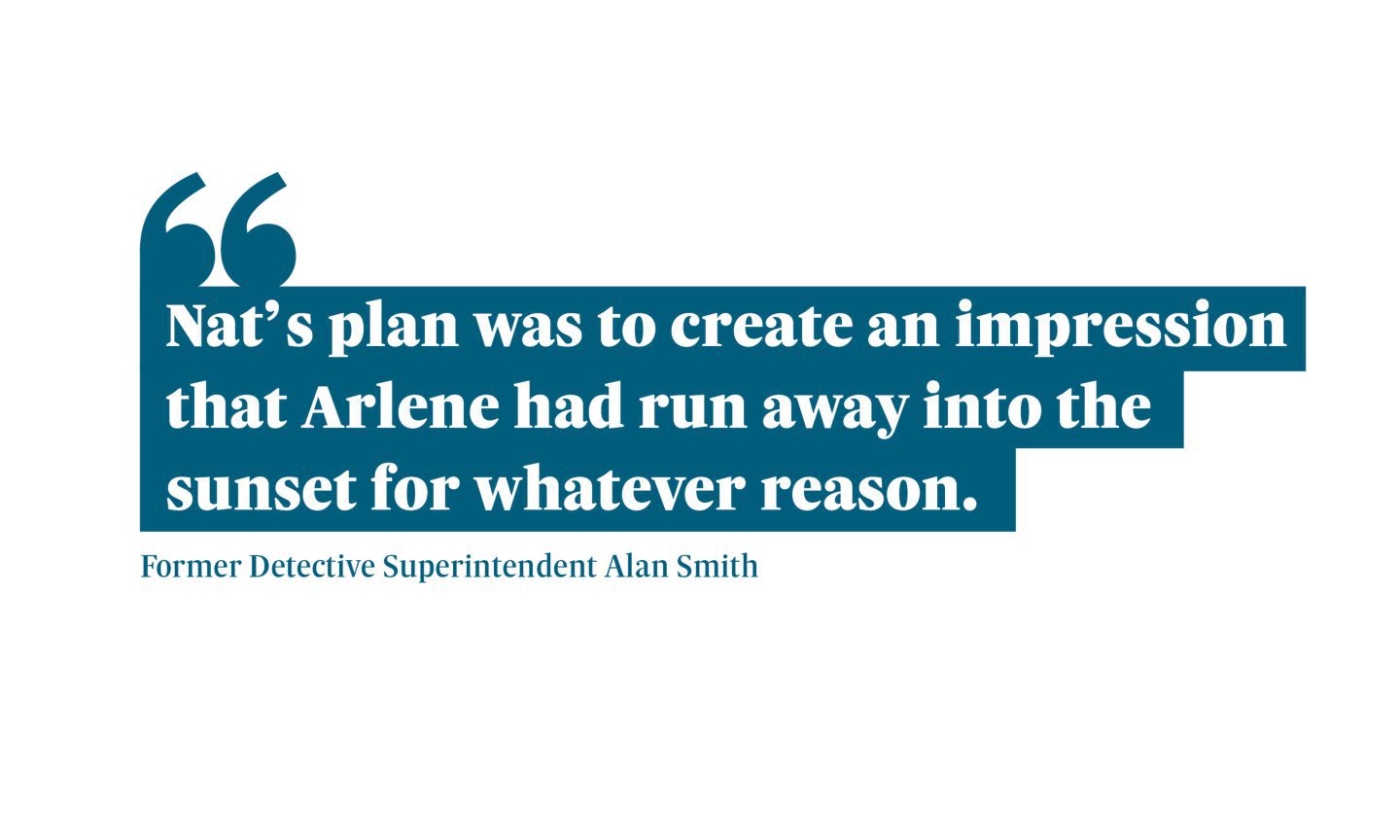
Mr Smith said: “Nat’s plan was to create an impression that Arlene had run away into the sunset for whatever reason.
“He believed that, as long as the body was never found and there was no forensics and no witnesses, that that would be accepted as what happened.”
Arlene’s friend Marion Taylor said: “The things that he did put out when she went missing – he told all his mates that all of us were drug addicts, including Arlene.
“It was utter nonsense. None of us took drugs. Michelle and I would drink casually, but not Arlene.
“She had Crohn’s disease.
“We would be round at Michelle’s before a night out – Arlene had one drink and would make it last the entire night because it made her sick
“Arlene was coming out for the company, not the alcohol.”
One source claimed Nat changed the name of his band from The Minesweepers to Nat Fraser and the Minesweepers.
“They would play in pubs and clubs around Moray, including songs such as Lyin’ Eyes by the Eagles in their set,” said the source.
Marion, who was a driving instructor in 1998, recalled how Nat was in a shop in Fochabers where he bumped into one of her learner drivers.
She said: “He said to the girl ‘tell you what, can you ask Marion if she’d like to come to a murder mystery weekend with us?’
“I took that as a threat.”
A proof-of-life investigation
Meanwhile, police were keeping tabs on Arlene’s records such as her bank account to see they offered any clues.
Alex Prentice KC, who prosecuted Nat in the second trial, told us: “Police would go to various institutions: NHS, dental records, banking, finance, family – all sorts of things.
“It is very difficult to function in a society nowadays without any connection anywhere – whether it’s telephone, cars, CCTV, banking, shopping, prescriptions – all these things are checked.
“Police embark on a proof-of-life investigation, which is a large amount of work.”
Police did such a thorough job on this case that it now used as an example of best practice to aspiring forensic investigators.
Despite their best efforts, there was no sign of activity from Arlene, suggesting she was dead.
Meanwhile, Nat was keeping up the pretence that Arlene was in fact alive and – two months after she went missing – he organised a press conference in Elgin.
He told gathered journalists: “My message to Arlene is to come home because the children are missing you terribly.”
Mr Smith said: “He did it out of peer pressure.
“Arlene’s family put up a reward of £10,000 and then Nat said ‘well, I’m going to have to match that.’
“They weren’t very happy about that but we couldn’t stop him.
“I remember (Nat’s friend) Hector Dick saying to me (during a voluntary police interview) ‘Alan, why is he only putting up £10,000? He could put up £1m. He knows that reward will never get claimed, because he’s the one’.”
Police assigned a psychologist to look for clues in Nat’s behaviour at the press gathering, but he gave little away.
A break in the Arlene Fraser case
Six months went by without a breakthrough until Grampian Police ordered a major shake-up.
The force brought in a new senior investigation officer, Det Supt Jim Stephen.
He assigned a new team of detectives – dubbed ‘Jim’s A team’ – to the case.
They set to work pouring over thousands of records connected to the case – and hit gold through the call we mentioned earlier.
A few months earlier, someone tipped off police that they had heard a suspicious conversation at a New Elgin pub about a car sale.
Mr Smith said: “One of the records was this pub conversation.
“That was the revelation.”
Detectives believed someone known to Arlene could have driven this car – a beige Ford Fiesta – to Arlene’s house.
Their theory was this mystery person told Arlene it was a replacement car after her old car caught fire, so she took it out for a test drive and was murdered and buried.
“That led to Kevin Ritchie’s door,” said Mr Smith.
Police swooped on Ritchie’s home in Cuminestown, arrested him and questioned him for three days.
The mechanic occasionally knew people who were looking to sell cars.
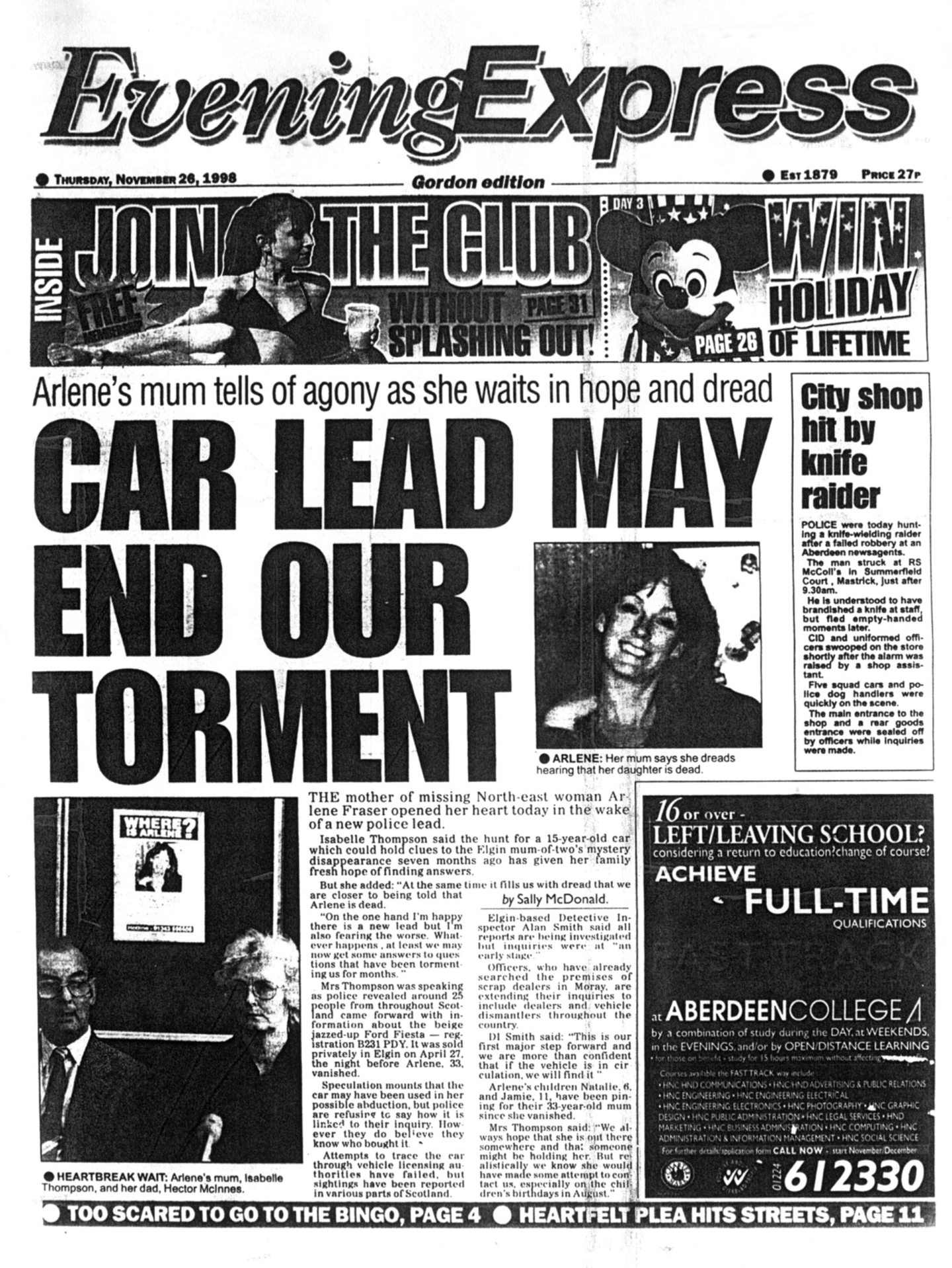
Detectives learned that, a few days before Arlene went missing, Dick had called Ritchie.
Intriguingly, Nat’s pal Hector Dick made the call from a phone box near his house.
Mr Smith said: “Why did he make the phone call to Kevin Ritchie there and not his landline?
“The whole circumstances of that stunk of something.”
It emerged Ritchie had gone to Dick’s farm in Mosstowie.
Ritchie would later tell a court: “Hector asked me for a car on the Monday night before Arlene Fraser disappeared.
“He said he was wanting a car to go down the road.”
The Ford Fiesta link
Police were intrigued – and it got more interesting when Ritchie told them: “Nat arrived at Hector’s farm while I was there.”
Their feeling was Nat could have asked Hector to buy the car, so a third person could drive it to Arlene to abduct her.
Mr Smith said: “That was a huge moment.
“It led to a press conference in Elgin. It rebooted the investigation.
“We were able to prove Kevin Ritchie bought the car from the owner (William Cabrera) the night before Arlene went missing, so he was right in behind the 8 ball.
“Kevin sold the car to Hector who paid him £50 to keep quiet about it.”
Richard Murray, of Spey Bay Salvage in Fochabers, saw the press conference and called police to say he remembered crushing the Ford Fiesta after someone dropped it off.
And though Murray gave evidence in court, police were never certain of that link.
Mr Smith said: “It was a red herring. It didn’t take us anywhere.
“Richard was trying to be helpful, but had no paperwork.”
He added: “We went through a heap of scrapyards in Fife because we knew Hector Dick in a past life had sold a lot of scrap to a family connection in Fife.
“The clever money was that the car went down to Fife, out of Moray, as opposed to being dropped off in Fochabers.
“If one error gets you convicted for murder, why would you risk keeping the car local?”
Police needed to explore Hector Dick’s involvement, but he denied knowledge of the Ford Fiesta in a series of voluntary interviews.
Mr Smith said: “Hector is a closed book.
“He always thinking someone is trying to get someone over him.”
So police plotted to smoke him out.
Wearing a wire
In December 1998, they took Kevin Ritchie to a military base, fitted him and his car with a wire and told him to meet Hector in the woods, to see what came up.
Mr Smith said: “The Scottish Crime Squad came up from Portlethen and we did the briefings at RAF Lossiemouth of Kevin and got him wired up there.
“Off he went to do his thing.
“He was absolutely bricking it. My worry was he might show out.
“We were sat in the woods nearby listening to it.
“We didn’t have fear for his life. We didn’t think Hector was going to shoot him.
“We were so close (to a breakthrough), we felt, then.”
There were two or three such undercover operations.
According to evidence later presented in court, Dick told Ritchie: “I (knew) the silly bastard” – referring to Arlene. He also referenced the purchase of the Ford Fiesta.
Dick told Ritchie: “Just say you do not remember.
“You can only be charged with what you’re caught with or what you say.
“Just turn your back and walk away from the bastards. Just say nothing.”
The bugged conversation told detectives something had gone on.
But it still did not tell them who killed Arlene Fraser on her husband’s orders.
Two arrests
In the next few years, the investigation stalled – partly due to the passage of time and partly because police struggled to make headway while criminal cases were ongoing involving two accused people.
The first was Hector Dick.
He was charged with perverting the course of justice in connection with the purchase of the Ford Fiesta and put on trial at Dingwall High Court.
However, when video emerged of the undercover meeting, Dick pled guilty.
He was jailed for a year.
The second was Nat Fraser.
He had been arrested on suspicion of attempted murder when strangling Arlene a month before she went missing.
The charge was downgraded to causing a danger to life – much to the disapproval of Arlene’s family.
In March 2000, Nat was jailed for 18 months after admitting the charge.
He was freed from Inverness jail on licence that November, but put back in jail for another year the following April for an £18,000 legal-aid fraud.
Nat had claimed he did not have money for legal expenses – but that wasn’t true.
It was during Nat’s first spell behind bars that things began to take a bizarre twist.
Hampered by the various legal proceedings, police could not make much progress.
Feeling under pressure from the media, they turned to unorthodox methods.
The lip reader’s role
Mr Smith said: “We even succumbed to engaging with psychics because the press were pushing us towards that.
“We had used a criminal psychologist studying Nat’s behaviour.
“He said Nat was a pretty good actor – but that type of intelligence is opinion-based and not particularly helpful.”
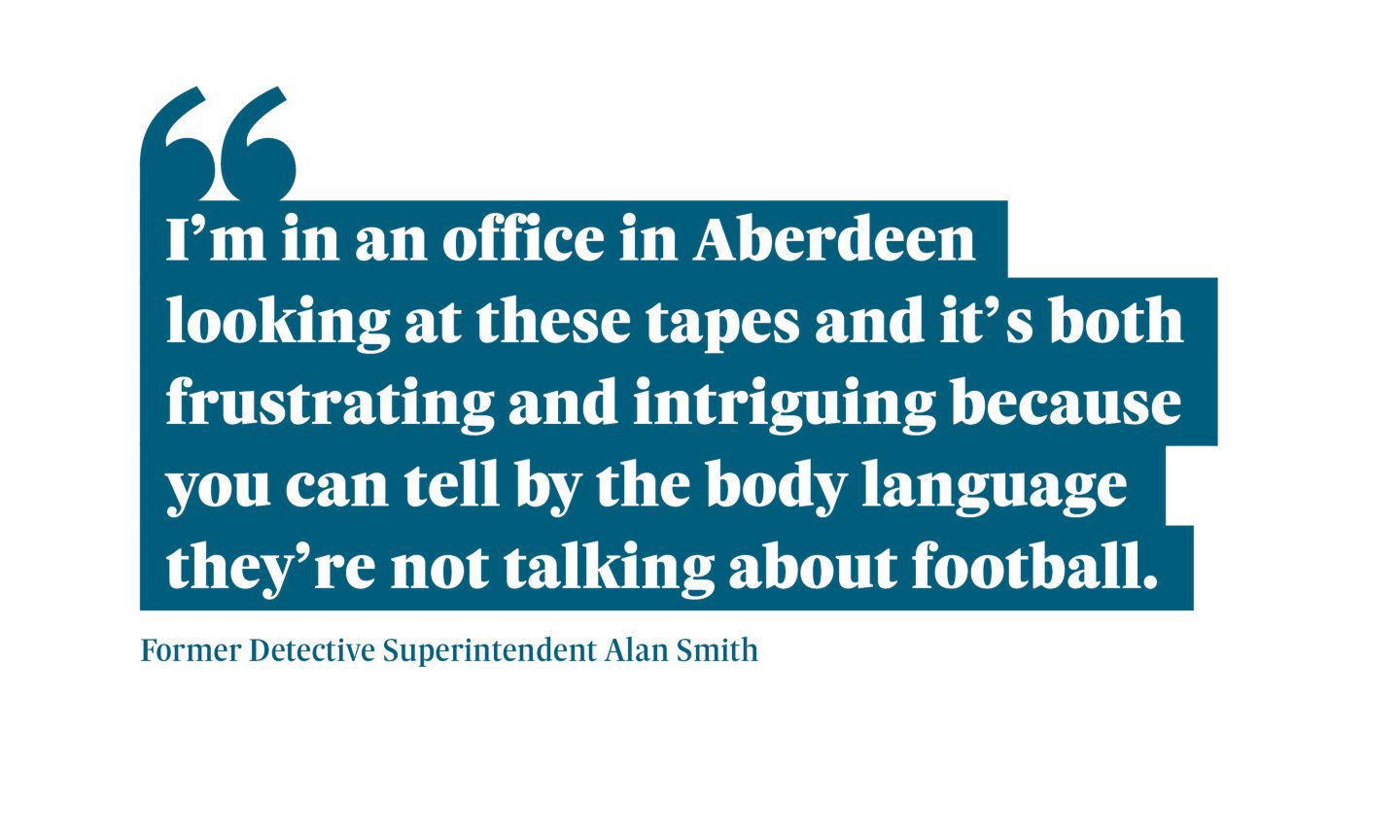
While Nat was serving time, his pal from Lincolnshire, Glenn Lucas came to visit.
Police recorded the calls.
Mr Smith said: “We had these tapes of Glenn Lucas and Nat Fraser deep in conversation in prison.
“I’m in an office in Aberdeen looking at these tapes and it’s both frustrating and intriguing because you can tell by the body language they’re not talking about football.”
But there was no audio.
Then came the role of lip reader Jessica Rees – a role that would prove very controversial in years to come.
Mr Smith added: “One of the guys in the special branch Peter Campbell had been seconded in an anti-terrorism operation in London,
“He said ‘there is a lip reader the Royal Ulster Constabulary used to interpret a conversation in a park in Ireland between a terrorist and a bomb maker that led to the recovery of bomb-making equipment’.”
Police met her in Cambridge and asked her to study the videos.
She told police Nat had spoken of “arms off”, “pulling teeth out” and “they can’t find her.”
Rees added that Nat had said: “It’s all down the plug hole so the police don’t know s*** so f*** the lot of them.”
While Rees’s reliability would later be questioned, the case against Nat was growing.
And in June 2001, the Crown Office believed they had enough evidence.
Nat was charged with murder.
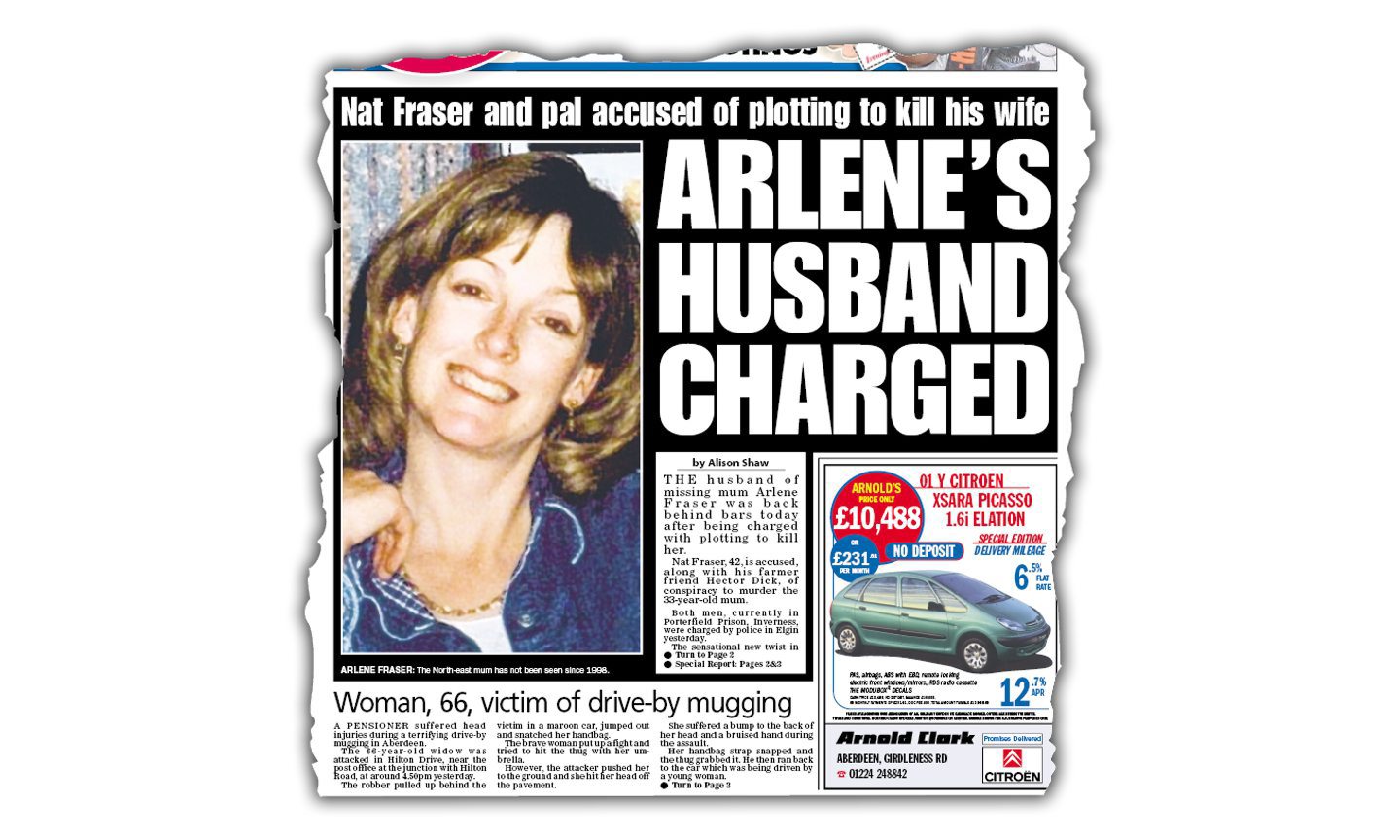
It was a huge development for everyone involved – but there would be many more shocks to come, including fist fights, sinister threats and a community torn in two.
We asked Nat Fraser and Hector Dick for comment and both declined.
We made attempts to contact Kevin Ritchie and Richard Murray but were unsuccessful.
Glenn Lucas has since died.
Read part four next
If you would like to speak to our Impact investigations team about the case, please email Dale.Haslam@eveningexpress.co.uk.
